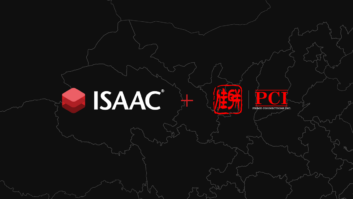Salesperson Seeks Enlightenment at InfoComm
Aug 13, 2014 8:16 PM, By Jennifer Wisehart
As a previous and current InfoComm exhibitor, I have logged my fair share of hours on booth duty. This year, however, I wanted to expand my show experience by taking in some educational sessions. As an AV integration salesperson, I am trying to get a handle on the unified collaboration (UC) market as my corporate customers blur the lines between their AV and IT departments (in some cases, there is no distinction) while yearning to bring the flexibility of consumer video interaction to the enterprise level. Admittedly, I struggled to understand the more complex technical aspects of unified collaboration, but I needed to wade in nonetheless.
First Impressions
At first look, it is hard not to view the move to UC as a big commitment for an end-user, which appears to mean a full-stop infrastructure change away from traditional VTC collaboration tools. This, in turn, disconnects the user from partners and customers who still use an H.323 platform. Add to that the required buy-in and parallel implementation by the customer’s IT department of a chosen platform or approach and you have a new challenge for someone (including myself) inherently concerned with traditional AV solutions. With these preconceived notions, I signed up for a couple of UC-related manufacturer sessions (Crestron/Microsoft Lync and Cisco) in hopes of getting some basic understanding of what the shift to UC is all about.
As the presentations were manufacturer-based, I expected I would be learning about product offerings and be given an implementation overview. In that sense, the sessions delivered, though at an accelerated pace. However, I also had some questions and was hoping for clarification. Specifically, what are the limitations of communication and/or use of feature sets across varying platforms and solutions? Is there a way to help a customer make a gradual change from an H.323 standard and implement a blend between UC and VTC during transition?
The first question is based on what I know about customers. What customers want is to be able to use all of these different flavors of video and communication end points and integrate them into one universal collaboration system. They want a version of a protocol droid, a real-life C3PO that can take their various standards and features sets, SIP and H.323, and have it all work together seamlessly for any end-point user who wants to join the fun of a collaborative remote activity.
The hard news is it is not that simple. What I learned is that the communication can be made to work between H.323 and SIP standards, but some feature sets may suffer in the process. This is going to be the challenging sell to the end-user who still struggles to understand why the features vary on their cross-platform VTC systems, depending on which codec initiates a call. But these end-users are going to have to make a choice, and they are going to expect my ilk to help them be informed. When faced with all of the various if’s, and’s, and but’s associated with this migration to UC, I can see the potential for users going in a vicious circle of indecision while they try to determine whether to go down a Microsoft Lync road that will integrate with their Crestron control and switching infrastructure, or to use a Jabber and Webex-based UC platform that will be compatible with the new direction of Cisco. (These by no means are the only options, just the ones I learned about at the time.) Something will need to be left behind, features will have to be sacrificed, and the answer as to what will be the best choice is a complex one. It will likely need to take some long discussions of uses for each room, and the collective needs of the users (as if that is some finite or quantifiable thing, ever), and a consensus reached that will make all users happy enterprise-wide.
Implementation Considerations
Having to make these infrastructure decisions raises further questions; namely, how do I help my customers transition in a way that doesn’t make them feel like they have spent money on a long-term infrastructure that is now being yanked out from under them? What are the safe and easy stepping stones to transition? There is not an easy answer that I can glean from the sessions I attended. On the Crestron/Microsoft Lync side, there is the potential to employ a service like BlueJeans or TrueUC, a hosted conferencing service that can tie it all together, while in the background a user migrates from traditional VTC to a UC solution. Or if the Cisco path is chosen, there are ways to put the UCM in line with the VTC to use those gateways and bring in endpoints. Again, both ways can limit feature sets for certain video endpoints, and assessing what features are required and what can be sacrificed will play into the decision of how best to implement a transition plan.
Ultimately, my takeaway from the sessions was that I still don’t fully understand the limitations of trying to pull the old together with the new, or how best to step a customer into the new world of UC. I thought I might get these answers in the sessions, but now understand I was asking the hard questions that don’t yet have nice, neat answers. There is much more to learn, and I took the first step at InfoComm. UC is an emerging market, and what better time than now to get educated.










